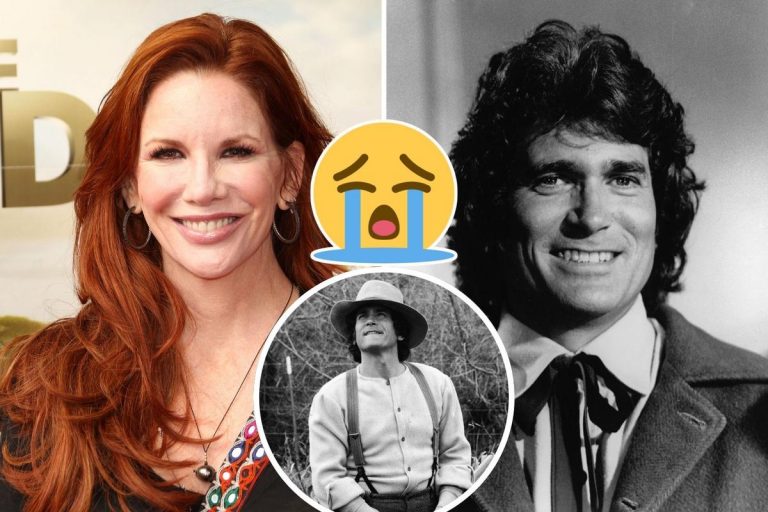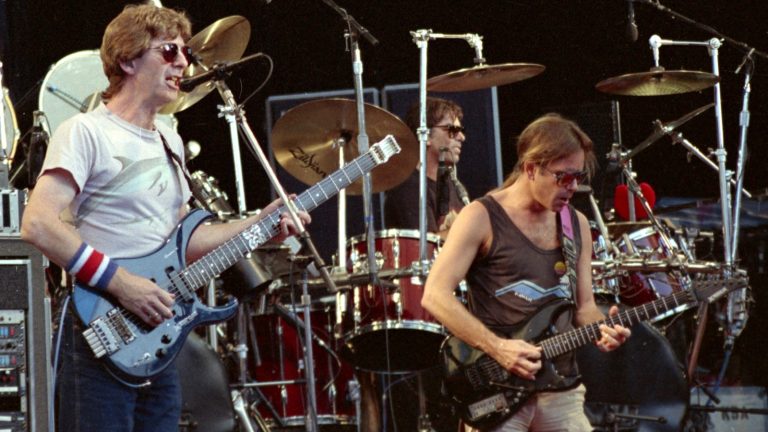Bruce Springsteen and the E Street Band were in rehearsals for a tour. Which is normal most of the time, but due to the pandemic, a planned break ended up being six years long.
“Like every good boxing story, it’s like the spirit of, will they survive?,” director Thom Zimny tells UCR. “Will they train and get back in the ring? Will they survive the fight?”
By the time they took the stage in Tampa, Fla. in February of 2023, they were ready. Road Diary: Bruce Springsteen and the E Street Band, the new film by Zimny, takes stock of the intense work that the Boss and his longtime musical comrades had to put in. As the filmmaker recalls, even as they struggled with slower tempos on legendary warhorse songs like “She’s the One,” they found their footing within days.
Road Diary, which is now available to watch on Hulu and Disney+, also goes beyond the tour preparations. It examines the interpersonal dynamics of the band and how unavoidable loss — the deaths of core members Clarence Clemons and Danny Federici, for example — were addressed and how those same losses are still felt here in the present day.
Longtime fans will find familiar topics like that addressed in a new light and for the newcomers out there, Road Diary is an engaging watch that demonstrates just why the world can’t let go of Bruce Springsteen and the E Street Band. During a recent phone conversation, Zimny shared his experience of working on the film.
When it comes to working with Bruce, you’ve said you go in not knowing what to expect. You started without a story in a sense. When did you realize the arc of what this particular film was going to become?
The arc of the film came into focus the moment that I started to go back to the edit room and realized, “Wait a minute, he’s thumbing through the notebook in a certain way. There’s a certain intensity piecing together these songs. There’s something going on, and I have to look at it,” I realized that’s the storyteller, that master magician who’s able to take a group of songs, piece them together. So that was a key moment for me, which was examining the dailies of the film footage of the band in those early days of rehearsals. Watching Bruce put one song against another and discuss it with Stevie [Van Zandt], I knew I had something there. Because he was taking on the tour set list in a different way. He was trying to tell a bigger story and it was something I was witnessing. I didn’t discuss with him. I just continued to film. Then when I saw the live concert, I knew it was really impactful, that these choices that he made as a songwriter, he was putting together these songs to create a feeling. That’s what was happening in the concert. So it just proved to me, that this was a storyline that I needed to chase and explore.
Watch the ‘Road Diary: Bruce Springsteen and the E Street Band’ Trailer
How are things organized as far as the Thrill Hill archive with audio and video of Bruce and the band? You do an impressive job of weaving in very specific archival footage, both performance-wise and also Interview clips with folks like Danny and Clarence are no longer here. How do you go retrieve, or if it requires a search, find a quote or insight that you want?
Well, you have to know the material intimately. I have to treat the archive like a tool and a device to use in the film. You have to know the archive. You have to know the vault inside and out. So you have to watch full interviews. That interview that’s in the documentary with Clarence and with Danny, that was something that I shot myself. So I knew years ago that I had this material that I didn’t use and it just would work for the doc.
I liked Steven’s anecdote about being at the pre-show huddle and Bruce telling a story about how they were back in the same venue where he’d gotten booed off the stage opening for Chicago. What is one of your favorite anecdotes you heard from the old school E Street guys?
I love the early days of E Street, where they talk about Clarence Clemons cooking for the band, when they’re traveling in a tour bus and they wake up to the smell of breakfast, and there’s Clarence, like a short order cook delivering breakfast, you know, like this big brother. Those are my favorite moments, because it really, as a fan, it brings you into the world of E Street and the history. It literally places you in a time and a place. That’s part of the archive too — I found footage of Clarence in 1975 during the time of that story. Hearing him talk and seeing Bruce next to him, it’s really an amazing time machine, the archive, because it takes you back. Road Diary has a lot of those moments that I was able to dig out of the vault and show things that have never been seen.
READ MORE: How Bruce Springsteen Got His Nickname ‘The Boss’
I like that the film addresses the losses of Clarence and Danny, even though it’s been covered in the past, it feels like you go at it from a different and more specific angle.
Well, I wanted to talk about Danny and Clarence’s loss in a different way, where I wanted Bruce to reflect on how he’s coped with that loss.. One of the things that Jon Landau so beautifully explains is that when Bruce finds somebody, he stays with them. The people who took on the roles of filling in for the sounds of the sax, Jake [Clemons], Clarence’s nephew, and Charlie Giordano, who took the position playing the keyboards. You know, there are important elements in this narrative to explain how Bruce carried on that sound equality of E Street,, but also how they’re not just players filling in. They have their own connection to the E Street legacy and the E Street story. And there’s still that loss — the loss of Clarence and Danny is always going to be there — but their love and their power and their sonic connection returns nightly through the work of Jake and Charlie.
This is a very different band than when you started with in 2000 when you were working on footage for the Live in New York City concert film with Bruce’s team. They’ve added the choir, the horn section and so on. What’s been the most interesting thing for you as far as how this band has evolved?
What’s interesting [for me] is watching Bruce take on new tracks like “Nightshift” and how he incorporated the vocals and how he’s expanded on those songs. The other interesting thing too is the presence of horns. Having the additional horns in the band, it’s really remarkable because he’s taken it to a whole other place with songs from the past, like “Kitty’s Back.” The doc has a moment where they really explore how Bruce uses not only the horns, but how that song is a free for all jam and what it brings to the night. But it also [shows] Bruce the band leader, controlling the environment and the band, leading the band on through his body gestures and also spontaneity. Each night is a different version [of the show]. It might be the same set list, but the spirit is different.
READ MORE: Listen to Bruce Springsteen’s Cover of Commodores’ ‘Nightshift’
I like how you demonstrated the juxtaposition of the slow tempo that they were working on with “She’s the One,” using both footage from back in the day and the current rehearsals. That was fascinating to see how it all lined up visually and musically with what they were struggling with.
Thank you. Yeah, one of the things I wanted was for the film to be truthful. When you get to the space of the band first coming back together, they are brushing off a bit of rust and dust from not playing together for six years. So I wanted “She’s the One,” that sequence where they’re playing it a little too slow, I wanted that to be explored. Because it sets up the challenge of acknowledging their age, acknowledging the time they haven’t played. Like every good boxing story, it’s like the spirit of, will they survive? Will they train and get back in the ring? Will they survive the fight? So it’s a metaphor for the story, in many ways, that whole sequence of playing the song too slow, but at the same time, it’s great just to see E Street, within days kick in and really find the tempo.
Bruce Springsteen and the E Street Band 2023 Opening Night
Springsteen hits the road with his longtime backing band for the first time in six years.
Gallery Credit: UCR Staff




Leave a Comment